“We have been vaccinating for the past six years and we find that, when combined with effective treatment, proper foot bathing and culling of chronic cases, it has given excellent results,” said Michael, who runs a flock of 300 ewes at Lisnashannagh on the outskirts of Carrickmacross in Monaghan.
Around half the flock is pedigree Texel. The commercial flock consists of Cheviot/Suffolk ewes crossed on to Texel rams.
Michael gets strong support in managing the flock from his son John, a qualified vet, who works with Murphy Sheerin Veterinary in Baltinglass, Co Wicklow.
In Michael’s former role as a sheep adviser, he had first-hand experience of the financial and labour problems associated with lameness, to which footrot is the biggest contributor.
“It is a persistent problem in a large percentage of sheep flocks and is one of the biggest factors affecting performance and profit. It is particularly difficult to eradicate where stock are being bought in,” he said.
In demand
Progeny from the McHughs’ Greenhill Texels flock are in strong demand. All of this year’s crop of 60 ram lambs are sold. There is also strong demand for their pedigree ewe hoggets.
“We have had a positive reaction from our customers to our vaccination programme. A number of purchasers of our rams have told us that they have less lameness problems with their rams since we began vaccinating,” said Michael.
New cross
This year, the McHughs experimented with crossing some pedigree Texel ewes with a Bluefaced Leicester ram. This cross is becoming popular in the UK and forms the basis of Aberfield sheep, marketed by a Welsh-based company.
“We are keeping the females for commercial replacements. There is good demand for the rams which are suitable for breeding replacements and we could have sold many more than the 10 ram lambs we had available this year,” said Michael.
Ewe hogget replacements for the commercial flock are sourced from the same farm each year and are vaccinated on the farm prior to delivery.
“We make sure all replacements, whether home-reared or purchased, are given the footrot vaccine before being put to the ram,” he stressed.
Follow the five-point footrot control plan
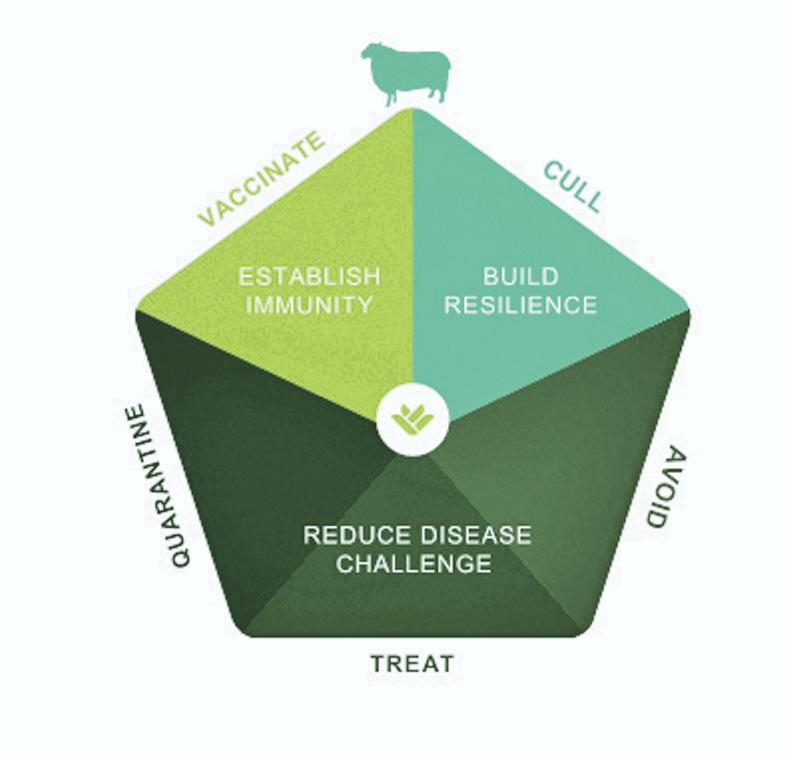 Leading British sheep health specialist Dr Fiona Lovatt advocates the use of the following five-point plan, which is illustrated in Figure 1. It has been used successfully in the control of footrot in a number of farms in Britain.
Leading British sheep health specialist Dr Fiona Lovatt advocates the use of the following five-point plan, which is illustrated in Figure 1. It has been used successfully in the control of footrot in a number of farms in Britain.
1. Treat
All clinical cases should be effectively treated, including the use of an injectable antibiotic, as well as a localised antibiotic spray. Any paring should be kept to the absolute minimum if done at all.
2. Avoid spread
Footbathing sheep following handling can help reduce the spread of the disease. Spreading lime at gateways and around feed troughs can also be helpful.
3. Vaccinate
If footrot is affecting over 2% of the flock, Fiona Lovatt suggests there is a cost benefit in vaccinating the entire flock. “There is one licensed vaccine available. Used as part of a strategic plan, it is highly effective. It also helps reduce antibiotic use, an important consideration in the current climate of concern about over-use of antibiotics,” she said.
4. Cull
Some sheep are chronic carriers and will not respond to treatment. They are a continuing source of infection and should be culled.
5. Quarantine
All lame sheep should be isolated from the flock and treated accordingly. Keep bought-in sheep separate for at least 21 days.
Protecting against leading causes of abortion
Michael McHugh also vaccinates against both enzootic abortion and toxoplasmosis, the leading causes of abortion on sheep farms.
“We have been using both vaccines for the past 10 years. Before that, we had the odd case of abortion and tests showed positive results for toxoplasmosis,” he said.
“While we never had a positive for enzootic abortion, we feel it is an extra assurance we can give customers when all replacements sold are vaccinated for both types of abortion.
“All our replacement ewe hoggets are given both vaccines at least a month before they go to the ram. The one shot usually gives lifetime immunity,” he added.
Veterinarian Sharon Magnier explained that enzootic abortion is spread from sheep to sheep and may occasionally be spread by wildlife.
Toxoplasmosis is spread by cats and pregnant sheep are infected through contaminated feed and bedding. A single cat dropping can contain enough eggs to infect up to 100 ewes.
Abortion storm
“Infection by either of these sources can result in an abortion storm which can affect up to half the flock. On many sheep farms, abortion and infertility levels of up to 10% are a regular occurrence,” said Sharon, who is technical adviser with MSD Animal Health.
She said abortion outbreaks also pose a threat to human health. Pregnant women are at particular risk and contact with infected sheep can result in stillbirths or the birth of children with congenital defects, such as sight or hearing problems. Non-pregnant people with low immunity are also at risk of picking up infection, which can result in flu-like symptoms.
She said vaccinating a month before the start of the breeding season, combined with effective control measures, is the best way to reduce the risk of abortion.
“We have been vaccinating for the past six years and we find that, when combined with effective treatment, proper foot bathing and culling of chronic cases, it has given excellent results,” said Michael, who runs a flock of 300 ewes at Lisnashannagh on the outskirts of Carrickmacross in Monaghan.
Around half the flock is pedigree Texel. The commercial flock consists of Cheviot/Suffolk ewes crossed on to Texel rams.
Michael gets strong support in managing the flock from his son John, a qualified vet, who works with Murphy Sheerin Veterinary in Baltinglass, Co Wicklow.
In Michael’s former role as a sheep adviser, he had first-hand experience of the financial and labour problems associated with lameness, to which footrot is the biggest contributor.
“It is a persistent problem in a large percentage of sheep flocks and is one of the biggest factors affecting performance and profit. It is particularly difficult to eradicate where stock are being bought in,” he said.
In demand
Progeny from the McHughs’ Greenhill Texels flock are in strong demand. All of this year’s crop of 60 ram lambs are sold. There is also strong demand for their pedigree ewe hoggets.
“We have had a positive reaction from our customers to our vaccination programme. A number of purchasers of our rams have told us that they have less lameness problems with their rams since we began vaccinating,” said Michael.
New cross
This year, the McHughs experimented with crossing some pedigree Texel ewes with a Bluefaced Leicester ram. This cross is becoming popular in the UK and forms the basis of Aberfield sheep, marketed by a Welsh-based company.
“We are keeping the females for commercial replacements. There is good demand for the rams which are suitable for breeding replacements and we could have sold many more than the 10 ram lambs we had available this year,” said Michael.
Ewe hogget replacements for the commercial flock are sourced from the same farm each year and are vaccinated on the farm prior to delivery.
“We make sure all replacements, whether home-reared or purchased, are given the footrot vaccine before being put to the ram,” he stressed.
Follow the five-point footrot control plan
 Leading British sheep health specialist Dr Fiona Lovatt advocates the use of the following five-point plan, which is illustrated in Figure 1. It has been used successfully in the control of footrot in a number of farms in Britain.
Leading British sheep health specialist Dr Fiona Lovatt advocates the use of the following five-point plan, which is illustrated in Figure 1. It has been used successfully in the control of footrot in a number of farms in Britain.
1. Treat
All clinical cases should be effectively treated, including the use of an injectable antibiotic, as well as a localised antibiotic spray. Any paring should be kept to the absolute minimum if done at all.
2. Avoid spread
Footbathing sheep following handling can help reduce the spread of the disease. Spreading lime at gateways and around feed troughs can also be helpful.
3. Vaccinate
If footrot is affecting over 2% of the flock, Fiona Lovatt suggests there is a cost benefit in vaccinating the entire flock. “There is one licensed vaccine available. Used as part of a strategic plan, it is highly effective. It also helps reduce antibiotic use, an important consideration in the current climate of concern about over-use of antibiotics,” she said.
4. Cull
Some sheep are chronic carriers and will not respond to treatment. They are a continuing source of infection and should be culled.
5. Quarantine
All lame sheep should be isolated from the flock and treated accordingly. Keep bought-in sheep separate for at least 21 days.
Protecting against leading causes of abortion
Michael McHugh also vaccinates against both enzootic abortion and toxoplasmosis, the leading causes of abortion on sheep farms.
“We have been using both vaccines for the past 10 years. Before that, we had the odd case of abortion and tests showed positive results for toxoplasmosis,” he said.
“While we never had a positive for enzootic abortion, we feel it is an extra assurance we can give customers when all replacements sold are vaccinated for both types of abortion.
“All our replacement ewe hoggets are given both vaccines at least a month before they go to the ram. The one shot usually gives lifetime immunity,” he added.
Veterinarian Sharon Magnier explained that enzootic abortion is spread from sheep to sheep and may occasionally be spread by wildlife.
Toxoplasmosis is spread by cats and pregnant sheep are infected through contaminated feed and bedding. A single cat dropping can contain enough eggs to infect up to 100 ewes.
Abortion storm
“Infection by either of these sources can result in an abortion storm which can affect up to half the flock. On many sheep farms, abortion and infertility levels of up to 10% are a regular occurrence,” said Sharon, who is technical adviser with MSD Animal Health.
She said abortion outbreaks also pose a threat to human health. Pregnant women are at particular risk and contact with infected sheep can result in stillbirths or the birth of children with congenital defects, such as sight or hearing problems. Non-pregnant people with low immunity are also at risk of picking up infection, which can result in flu-like symptoms.
She said vaccinating a month before the start of the breeding season, combined with effective control measures, is the best way to reduce the risk of abortion.
 Leading British sheep health specialist Dr Fiona Lovatt advocates the use of the following five-point plan, which is illustrated in Figure 1. It has been used successfully in the control of footrot in a number of farms in Britain.
Leading British sheep health specialist Dr Fiona Lovatt advocates the use of the following five-point plan, which is illustrated in Figure 1. It has been used successfully in the control of footrot in a number of farms in Britain. 



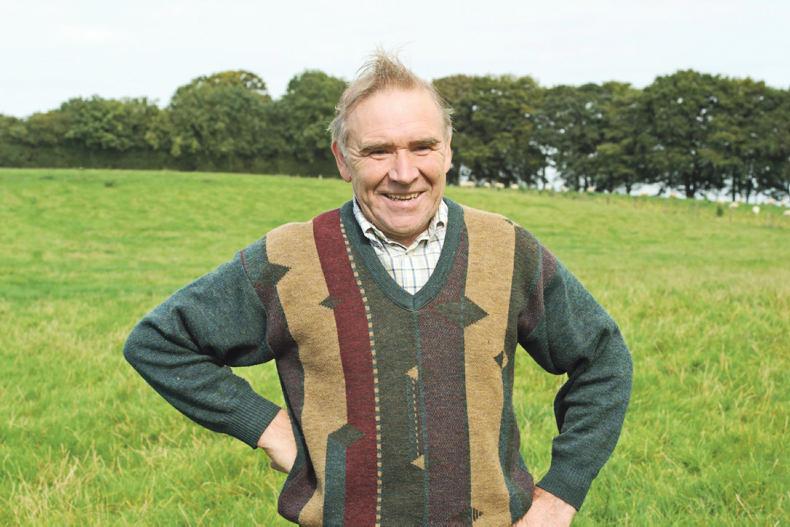
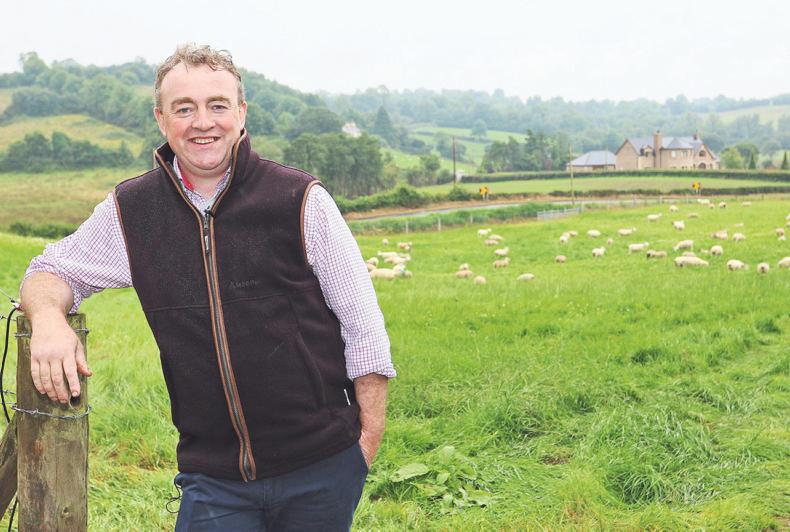
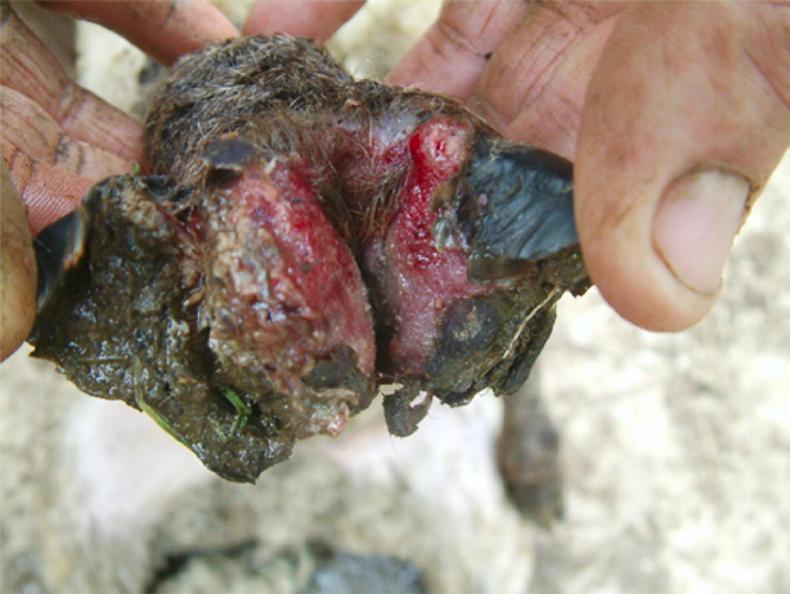
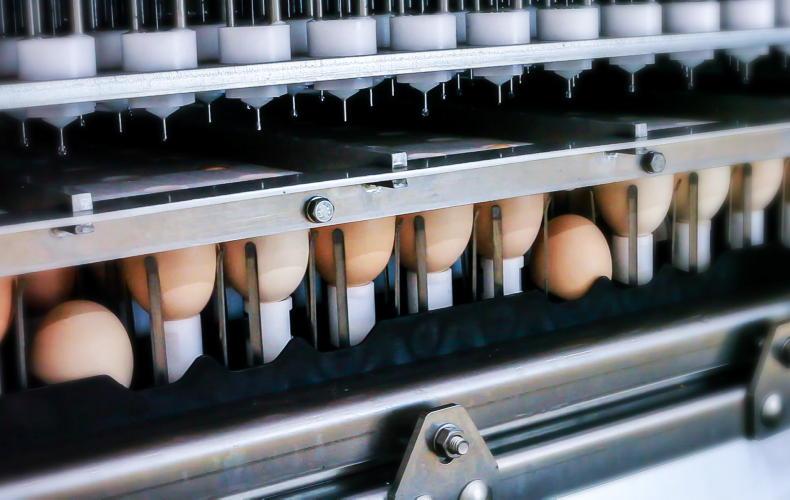
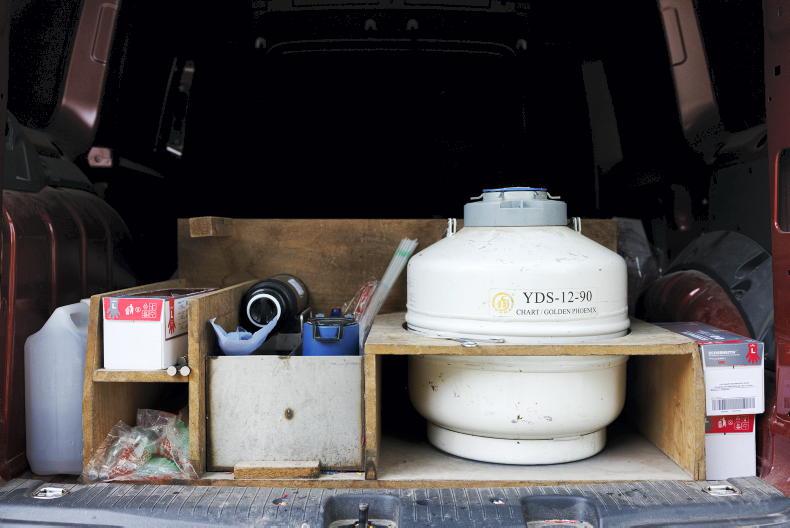
SHARING OPTIONS